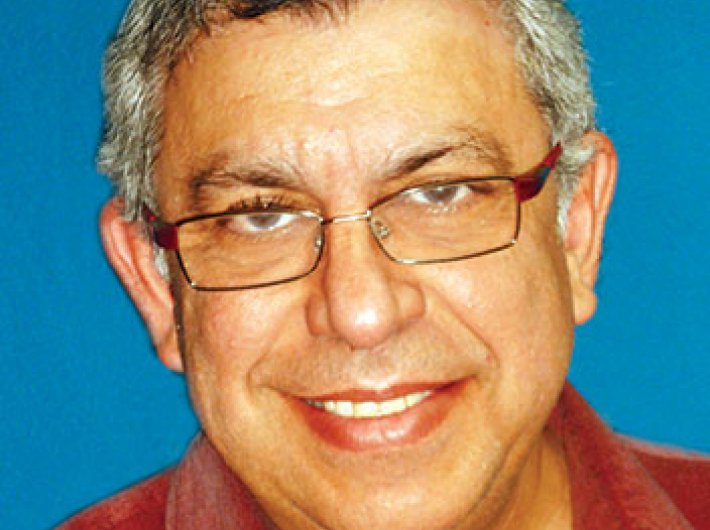He acquired interest in analytics and artificial intelligence (AI) technologies very early in his career while leading a team that was developing and implementing one of the first commercial AI systems for Digital Equipment Corporation (the company that was renamed as Compaq and later acquired by HP). In 2001 he set up iOmniscient, a video analytics company along with Ivy Li, as an offshoot of technology project that they were doing for an Australian government sponsored research group since the early 1990s. Dr Rustom Kanga has keen interest in technologies for smart cities and has also written a book – IQ-Smart Cities: Safety, Security, Efficiency. In an email interaction with Shubhendu Parth, he elaborates on the role of analytic in making cities truly smart.
Surveillance is a key component of a safe and smart city, which essentially includes cameras. What other components are critical for making a city smart?
Humans do not just use their eyes. They use their ears and nose as well to understand their environment. The more sophisticated smart city systems use smell and sound sensors in addition to CCTV cameras to provide a more complete understanding of what is going on. Beyond the sensors, the system needs to provide intelligence to enable the authorities to address their most critical problems. Studies have shown that if an operator is watching just two monitors, in 20 minutes he will be unable to detect any significant incident. This is where you need a system that can interpret what is happening on the various sensors and help him understand his environment. A sophisticated system also enables authorities to respond effectively when an incident occurs.
How smart can we expect the cities to become?
If you talk about transportation, one person might use a bicycle and another could use an airplane. Both are transportation but there is a big difference between them. Similarly, though many cities talk of being smart we can see that there are huge differences in what they implement. There are cities that install a large number of cameras and assume that their job is done and then, there are others that have implemented automated response systems and are happy about the work done.
You mentioned smell sensors. Can you elaborate on it?
Smell is an important sense for humans. Smell sensors are useful for detecting gas leaks, pollution, problems at sewage plants, and a host of other similar issues. In one city they were concerned with the early detection of electrical fires in tunnels. This was achieved through detecting the smell of the smouldering plastic sheeting on the wires.
You also mentioned sound sensor. How do all these sensors work along with the CCTV to form an integrated city surveillance and alert grid?
CCTV cameras are sensors for light. Similarly microphones are sensors for sound and one can get chemical sensors for smell. A comprehensive system will accept inputs from all these sensors. Each one can provide some information on the environment. The system will use various forms of logic to understand what they mean in combination. If you see a person falling down you might tell a responder to go and help. On the other hand if you hear a gunshot at the same time you might advise him to hold back for his own safety.
What about automated response system?
A smart system is not just about detecting incidents – the system has to help the user to respond to it effectively. Let us assume a bag has been abandoned as it was during the tragic event during the Boston marathon. The system needs to detect the bag even if it was significantly obscured. It then needs to determine who left the bag (even if it has been there for a while). Next it needs to track that person across all the other cameras within the network. Finally when he is located, the system needs to find the nearest police officer or police vehicle, give them information on the incident and on the person and advise them where he can be found. In a sophisticated system this entire process is fully automated and can be completed with minimal human intervention. The more sophisticated smart cities have already implemented such automated response capabilities.
But how does one decide on what capabilities to ask for?
You get what you ask for. If the requirements are not clearly articulated you will get a system that meets the stated requirement without being useful in practice. Take the supposedly simple application for detecting an abandoned bag. In a city if a person has maliciously abandoned a parcel or bag he would have done it in a crowded place where it is likely to be obscured from the camera’s view by the crowds. So the requirement should state that the system should be able to detect an abandoned object in a crowded scene where it is obscured for a significant proportion of the time and may not be visible even when it was first left there. Such a statement would ensure that the system would deliver what the city actually required and would eliminate the vast majority of systems that only work in empty scenes.
So what applications are most important for a smart city?
It is not appropriate to think of applications. Rather think in terms of the problems that need to be addressed. Cities have roads and metros and pedestrian areas. They may have stadiums and entertainment centres, hospitals, and banks. They have to address problems like finding lost children or preventing fraud at ATMs or the early detection of accidents, fights, fires or even floods. The system may invoke multiple applications to achieve these goals.
But in majority of cases, different agencies are responsible for handling each of these problems and in most of the cases these agencies and their systems do not talk with each other...
Invariably this will be the case. In a truly smart city the system will provide each agency with the information it needs to address its own issues. And co-operation between agencies is a political issue. It is for governments to determine how different agencies ought to co-operate. But assuming there is the political will to co-operate in the interests of citizens, the system should be able to facilitate such co-operation.
Are cities really able to use video analytics systems?
Many cities buy and implement systems assuming that these are commodities. They will therefore put in the cheapest available system without first determining whether it can address the issues that it is supposed to address. Whilst there is a lot of hype about smart cities, there are very few suppliers with technology that is sufficiently robust and sophisticated to achieve the result. City authorities need to consider these aspects while making purchasing decisions. Often cities do not have access to expert advice and end up spending money on technologies that are not able to deliver required results.
So what should the city administration do? What is the solution?
The city administration obviously needs to ensure it gets good advice. If it uses consultants it needs to ensure that these consultants have had experience with sophisticated technologies. It will be inappropriate to ask them if they have been involved in large city projects. There are many large city projects with virtually no intelligence. It would be more appropriate, for example, to ask if they have implemented systems with an automated response capability. Size is less important than sophistication.
What about predictive analytics based on the inputs from these devices?
City authorities are now talking about big data analysis where they can get unstructured data from a variety of sources which they can analyse. These sources invariably provide inputs in text form (e.g., from Twitter or Facebook). To analyse information from the type of sensors that we have discussed one needs a system that can convert the information available from these systems into meaningful metadata – essentially in text form – which can then be fed into the big data engines for analysis.
parth@governancenow.com
(The interview appears in the August 16-31, 2015 issue)

